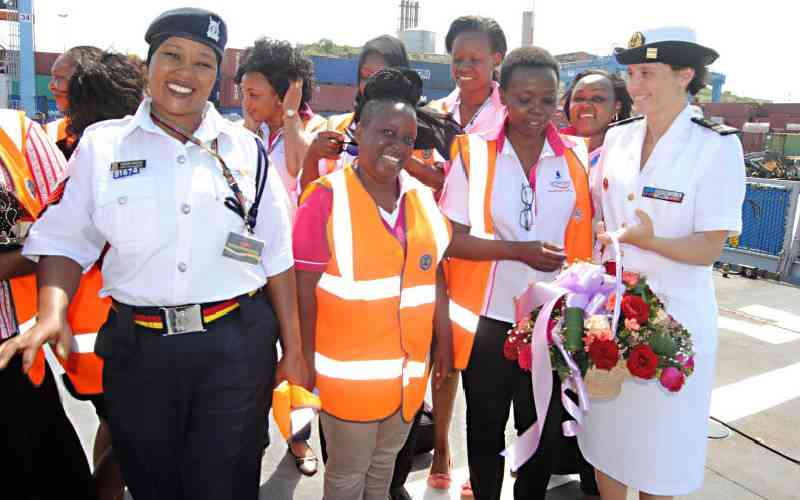Kenya tops in enlisting more women in the maritime sector
Business
By
Philip Mwakio
| Jun 27, 2022

Kenya and Comoros are among the leading countries that are promoting the participation of women in maritime jobs.
A recent survey on Women in Maritime by the United Nations agency for maritime affairs, International Maritime Organisation (IMO), has placed Kenya and the Comoros women associations at the top.
This is boosted by Mombasa port being the largest and key gateway to the eastern and central Africa region – serving Uganda, Rwanda, Burundi, DRC, Southern Sudan, Ethiopia, and northern parts of Somalia.
Kenya Maritime Authority Director General Robert Njue said the report states that women seafarers still make up less than two per cent of the world’s seafarers and are mainly employed by the cruise sector.
READ MORE
Kenya to restart licensing of 10 oil and gas blocks in September
Sh13.3b Kuscco heist now shines spotlight on Saccos' governance
Equity boss roots for African businesses as top US varsity visits
Crypto fraud surges in Africa as regulation lags, exchanges tighten security
Govt to release 1 million more fertiliser bags as demand surges
Safaricom startups drive makes return
EA Cables and TransCentury get lifeline in Sh4.8b loan row
State bans green tea hawking in fresh push to reform sector
Roaring engines, rugged terrains: Safari rally thrills Naivasha
“I am excited to learn that the survey indicates that women associations of Kenya and Comoros lead the table for female seafarers,” he told The Standard in Mombasa.
“They are followed by cruise companies from New Zealand and Spain. Those make up 10 times the proportion of women seafarers globally.”
Kenya’s Association of Women working in the Maritime Sector in Eastern and Southern Africa Region (Womesa), whose local chapter was launched in 2010, has been involved in mentorship programmes targeting girls in educational institutions.
Gender equity
One of its founder members is Shipping and Maritime Affairs Principal Secretary Nancy Karigithu. Womesa-Kenya aims to promote women's participation in the maritime sector and contribute to the growth of the industry regionally through activities aimed at promoting gender equity.
Mr Njue said previous studies by the IMO and the International Seafarers Welfare Assistance Network also indicated that women accounted for less than two per cent of the world’s 1.25 million seafarers serving on 87,000 ships.
He said women form between 17 per cent and 18 per cent of the seafaring workforce in the cruise sectors while six per cent work in cargo ships.
Most women seafarers work as ratings or service staff on passenger ships with only seven per cent serving as officers on board ships.
The IMO report states that out of the total number of women seafarers worldwide, about 9.8 per cent come from Latin America and Africa with the majority from the Organisation for Economic Cooperation and Development (OECD) countries estimated at 51.2 per cent, and 23.6 per cent from Eastern Europe.
“This is an indication that there is a great need for us to do more in Kenya and Africa to empower women in the sector, particularly to join technical areas like seafaring which have traditionally been a preserve for men,” Mr Njue said.

